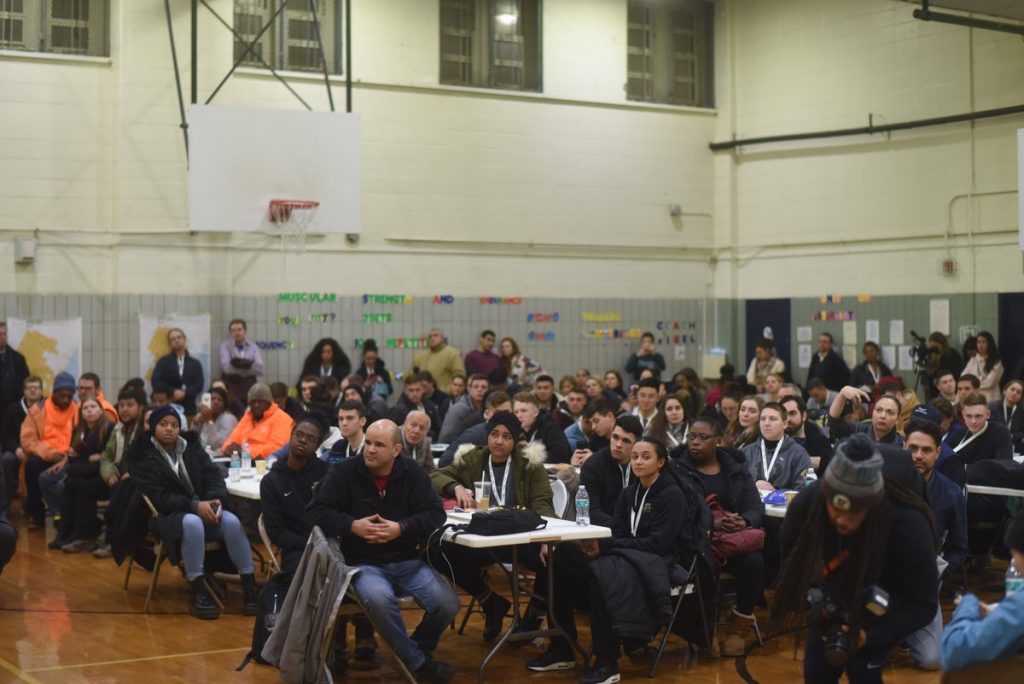I, enjoying a recent wealth of free time, had spent the first three months of 2020 volunteering and engaging with organizations in my community. CSA (distributing vegetables, graphic designing newsletters), Community Board meetings (asking questions about a proposed development, witnessing deliberations on zoning), Habitat for Humanity (building houses, sprucing up schools), Brooklyn Bridge Park (cleaning up parks), HOPE 2020 (surveying the homeless). General elections steal all of the limelight in the arena of modern democracy, but there is an entire ecosystem of organizations and events upon which elections, like apex predators, are dependent. They pass quietly, but they are often composed of a small slice of dedicated individuals who are passionate about issues affecting their lives more directly than a federal tax cut or even a healthcare bill, issues such as how many bollards to put up protecting a pedestrian plaza, whether to give a new bar a liquor license, or feeding those who can’t afford food. Offering your services or simply showing up to meetings is a simple but strong way to witness democracy in action.

Then, I read this exhaustive article from Places on Sidewalk Labs’ efforts to data-fy its entire new city, deploying sensors, cameras, dedicated apps with pop-up notifications, smart metering for utilities, online city-management platforms, the whole nine hundred. Clearly, the intent is to apply to the fullest the ethos of the Internet of Things, wherein every object is connected to the internet and is constantly broadcasting and logging its operation for a human or algorithm to monitor and manipulate in real-time. The key term to remember here is “real-time.” Gamification is another approach the Sidewalk team believes in strongly: infusing mundane, quotidian activities with levels, points, goals & rewards, et cetera, usually through a smartphone or another IoT device, allowing those activities to also be quantified and tracked. Many of these efforts strongly resemble the aspirational IAAC projects my colleagues and I produced during our year in the MaCT. The philosophy at play here is datafication: the belief that everything can be turned into information for electronic machines to analyze. In real-time.

Real-time is what gets me. Why, pray tell, does the data collection have to be happening constantly? I do not dispute the importance of data. I dispute the belief that the benefits of recording every thing at every moment will substantially outweigh the costs. Data will not help us become ten times more productive or make our food taste better or our cars less carbon-intensive. Societies are no strangers to slower forms of datafication, the Census being the best example. Alright, maybe once every ten years is too seldom. But surely we should first try out a biannual or annual Census before sprinting ahead to real-time population tracking?
What’s the difference between Sidewalk Labs and The New York City Department of Homeless Services? The difference is granularity. The former collects data with proprietary devices continuously at every moment, the latter collects data with human beings once a year. And I want to make the case for reinforcing the human beings, instead of sweeping them aside for the devices. Though they are more labor-intensive, the fact that they are fewer and farther in between will make the time spent doing them more valuable, and will foster active rather than passive citizens. Let’s not buy into technology for its own sake. If each of us volunteered in one community event per week, we would be living in a different country (Jimmy Wales would blush). If it does not demonstrably fit into the democratic ecosystem, it is fundamentally flawed.